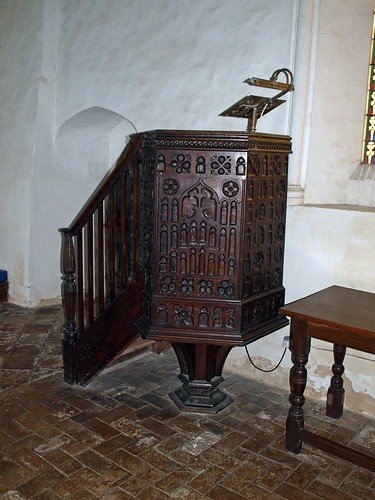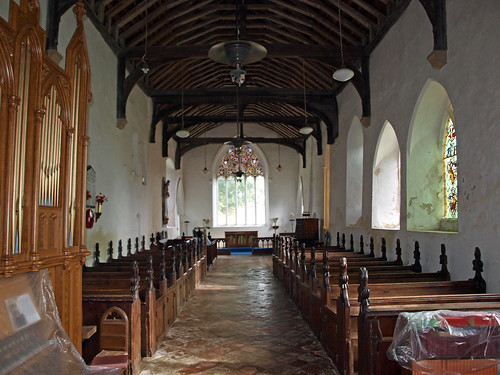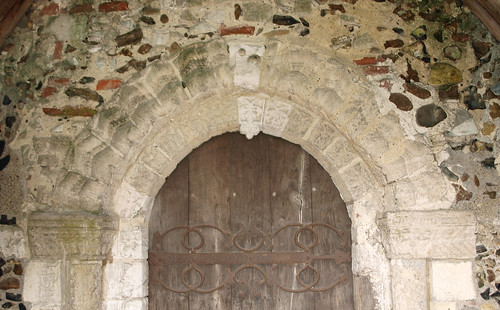ST MARY AND ST LAURENCE. The church is a fragment of a church of Augustinian Canons. The priory was founded c. 1115 by Ralph Fitz-Brian but later became a cell of St Léonard near Limoges. What remains is a long plain oblong. But the church had transepts and these had E apses. Their existence has been proved by excavation, and a main E apse can be surmised with certainty. That was the plan in the C12. It is assumed however that in 1110 no transepts were yet envisaged. Towards the end of the C12 the E end was made straight and second transepts were built to its N and S. Their responds and arches are still visible in the walls. Of the early transepts only traces can be detected. The only impressive Norman piece is the N doorway with one order of shafts, decorated but defaced, an inner order of jambs and one with close decoration, zigzag in the arch, and a partly illegible inscription down the iambs. One blocked Norman slit window in the N wall, one taller round-arched window in the S wall. Other windows of c. 1300. The big five-light 12 window with flowing tracery is Dec. In fact it is said to date from 1868, but it is most probably a copy of what was there before. Tie-beam roof with kingposts and four-way struts. - FONT. Square, Norman, with intersected arches on two sides, trefoil arches on columns on the third, and very oddly pointed—trefoil arches on the fourth. - PULPIT. A very unusual design; probably Victorian. - STAINED GLASS. Fine figures of the four Evangelists, early C14; from the tracery of the E window. - PLATE. Elizabethan Cup.
GREAT BRICETT. It has the charm of blossoming orchards in spring and of thatched cottages all the year round. The white manor and the 600-year-old church stand like brothers arm-in-arm by the green, the west wall of the church forming part of the house. The church is rather like a long barn with a gable bell-turret at one end and a fine old porch paved with black and white cobbles. Near it is a round sundial which is thought to have marked the sunny hours in Norman days, or, according to Mr Munro Cautley, perhaps even in Saxon days. A Norman doorway with three rows of zigzag leads to the simple nave and chancel, with a few old carved benches and a splendid Jacobean chest and altar table. There is a fine arcaded Norman font, and in a window are some fragments of 14th century glass showing angels with outstretched wings.



No comments:
Post a Comment